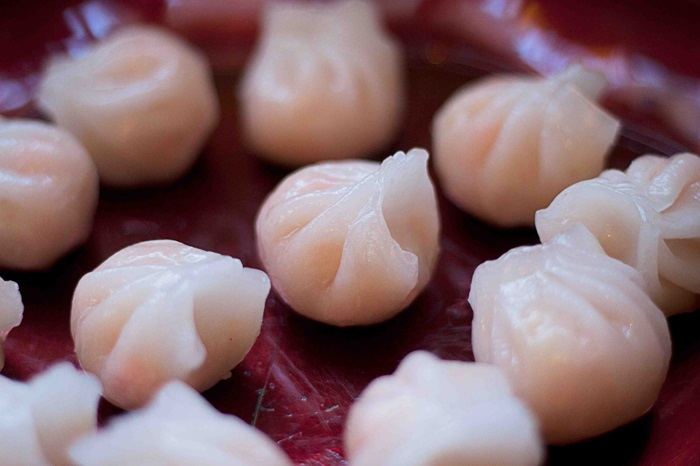Shrimp dumplings are a beloved dish that encapsulates the essence of Asian cuisine. These delicate parcels combine the succulence of shrimp with the softness of dumpling wrappers, creating a harmonious blend of flavors and textures. Whether enjoyed as part of a dim sum spread or as a main course, shrimp dumplings offer a delightful culinary experience. In this guide, we will explore how to prepare shrimp dumplings, delving into their cultural significance and providing detailed instructions for perfect results.
The Cultural Significance of Shrimp Dumplings
Origins and Traditions
Shrimp dumplings have deep roots in Chinese culinary history, particularly in the southern provinces where seafood is abundant. They are often served during special occasions such as Lunar New Year, symbolizing wealth and prosperity due to the golden hue of the cooked dumplings. The tradition of making dumplings at home has been passed down through generations, strengthening family bonds and preserving cultural heritage.
Symbolism and Festivals
In Chinese culture, shrimp dumplings are not just food; they carry symbolic meanings. The act of wrapping dumplings together signifies unity and cooperation within families. During festivals like Spring Festival, preparing dumplings becomes a communal activity, bringing people closer and fostering a sense of belonging. Each bite of a shrimp dumpling is a reminder of shared traditions and collective memories.
Ingredients and Preparation
Essential Ingredients
To make shrimp dumplings, you need a few key ingredients:
Fresh shrimp: Choose large, plump shrimp for the best texture and flavor.
Pork fat (optional): Adds richness and juiciness to the filling.
Wood ear mushrooms: Provide a unique crunch and earthy flavor.
Chinese chives or green onions: Enhance aroma and add freshness.
Ginger and garlic: Infuse the filling with aromatic depth.
Soy sauce, sesame oil, and rice wine: Season the filling and balance flavors.
Dumpling wrappers: Can be homemade or store-bought.
Preparing the Filling
Peel and devein the shrimp: Ensure they are clean and ready to use.
Chop the pork fat: If using, finely chop it to mix well with the shrimp.
Soak wood ear mushrooms: Rehydrate them in warm water until soft, then slice thinly.
Chop the chives or green onions: Finely chop for even distribution.
Mix the ingredients: Combine shrimp, pork fat, mushrooms, and chives in a bowl.
Season the mixture: Add minced ginger, garlic, soy sauce, sesame oil, and rice wine. Mix thoroughly until all ingredients are well incorporated.
Wrapping the Dumplings
Step-by-Step Guide
Prepare the workspace: Lay out a clean surface and have your ingredients and tools ready.
Place a wrapper on your palm: Hold it gently but securely.
Add the filling: Spoon about 1 tablespoon of the shrimp mixture into the center of the wrapper.
Moisten the edges: Dip your finger in water and run it along the edge of the wrapper to help seal it.
Fold and pleat: Fold the wrapper over the filling and create pleats along one side. Pinch the edges tightly to ensure the dumpling is sealed.
Arrange neatly: Place the finished dumplings on a lined tray, ensuring they do not touch each other.
Cooking Methods
Steaming
Steaming is the most traditional method for cooking shrimp dumplings. It preserves the delicate flavors and keeps the dumplings tender.
Prepare the steamer: Line a bamboo or metal steamer with parchment paper or cabbage leaves to prevent sticking.
Arrange the dumplings: Place the dumplings in the steamer, leaving space between each one.
Steam: Bring water to a boil, then place the steamer over the pot. Steam for about 8-10 minutes until the dumplings are cooked through.
Serve immediately: Transfer the dumplings to a serving plate and enjoy while hot.
Pan-Frying
Pan-frying adds a crispy texture to the bottom of the dumplings, creating a delightful contrast.
Heat a non-stick pan: Add a small amount of oil and heat over medium-high heat.
Arrange the dumplings: Place the dumplings flat-side down in the pan, without overcrowding.
Cook until golden: Fry for about 2-3 minutes until the bottoms are golden brown.
Add water: Pour in a little water and cover the pan. Let the dumplings steam for another 3-5 minutes until fully cooked.
Serve: Remove from the pan and serve with dipping sauces.
Recipes and Variations
Classic Shrimp Dumplings
Ingredients
- 200g fresh shrimp
- 50g pork fat (optional)
- 5 dried wood ear mushrooms
- 2 tablespoons chopped Chinese chives or green onions
- 1 teaspoon minced ginger
- 1 teaspoon minced garlic
- 1 tablespoon soy sauce
- 1 teaspoon sesame oil
- 1 teaspoon rice wine
- Dumpling wrappers
Instructions
Prepare the filling as described above.
Wrap the dumplings carefully.
Steam or pan-fry according to your preference.
Serve with soy sauce or chili oil for dipping.
Shrimp and Scallop Dumplings
Ingredients
- 200g fresh shrimp
- 100g scallops
- 50g pork fat (optional)
- 5 dried wood ear mushrooms
- 2 tablespoons chopped Chinese chives or green onions
- 1 teaspoon minced ginger
- 1 teaspoon minced garlic
- 1 tablespoon soy sauce
- 1 teaspoon sesame oil
- 1 teaspoon rice wine
- Dumpling wrappers
Instructions
Prepare the filling by combining shrimp, scallops, and other ingredients.
Follow the wrapping and cooking methods as outlined above.
Enjoy the enhanced flavor profile brought by the addition of scallops.
Conclusion
In conclusion, shrimp dumplings embody the rich traditions and flavors of Asian cuisine. From their humble origins to becoming a centerpiece of festive meals, these dumplings connect people through shared experiences and delicious tastes. By mastering the art of making shrimp dumplings, you not only enjoy a delectable dish but also honor centuries-old culinary practices. Whether steamed or pan-fried, each bite offers a burst of flavor and a glimpse into the heart of Asian culture. Embrace the joy of cooking shrimp dumplings and savor the moments they bring to your table.
Related topics:


